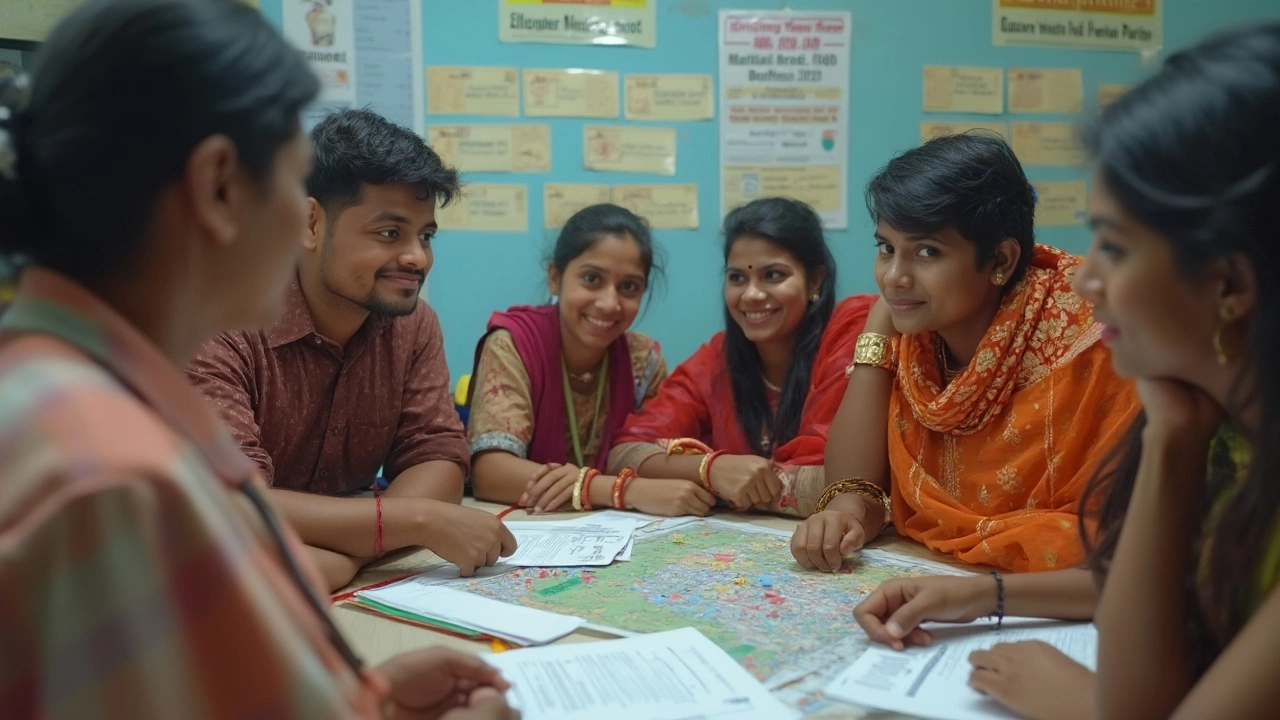Civic Engagement in Indian Education – Why It Matters and How to Get Involved
Ever wondered how a classroom can become a hub for community action? When students, teachers, and parents step out of the textbook and into real‑world projects, learning becomes deeper and more meaningful. That's civic engagement – the practice of using education to improve society and, at the same time, strengthening the education experience.
Why Civic Engagement Boosts Learning
First, it gives purpose. Instead of memorising facts for a test, students see how those facts help solve local problems – like cleaning a park before an exam or running a health‑awareness campaign during NEET prep. When purpose is clear, motivation spikes and retention improves.
Second, it builds skills that exams don’t test directly. Communication, teamwork, leadership, and problem‑solving are all practiced in community projects. Those skills show up in better class discussions, clearer answers in JEE or NEET essays, and stronger interview performance for scholarships.
Practical Ways to Add Civic Engagement to Your School Life
1. Start a Mini‑Project Club. Pick a cause that matters – maybe a reading drive for under‑privileged kids or a clean‑up of your school’s surroundings. Keep meetings short, assign roles, and set a simple timeline. Even a two‑week project can teach planning and execution.
2. Link Curriculum to Community Issues. If you’re studying biology, partner with a local clinic to understand health trends that affect NEET preparation. Maths teachers can use real data from a neighborhood market to teach statistics. This makes lessons stick.
3. Use Online Platforms. Platforms like eLearning portals or community forums let you share project updates, gather volunteers, and track impact. A quick post on a school’s WhatsApp group can recruit helpers faster than a notice board.
4. Invite Local Experts. Bring in a teacher from a top CBSE school, a coach from a successful NEET institute, or an alumni who cracked IIT. Their stories show how civic mindset helped them succeed, inspiring current students.
5. Celebrate Small Wins. Post a photo of a newly planted tree, share a thank‑you note from a community partner, or highlight a student’s leadership role. Recognition encourages more participation.
Remember, civic engagement isn’t a huge, time‑consuming commitment. Even a single class‑wide discussion about a local problem can spark action. The key is consistency – tiny steps add up to big change.
When schools prioritize community involvement, they create a virtuous cycle: engaged students perform better, teachers feel renewed purpose, and the wider community sees tangible benefits. That’s the kind of education Mission Excellence in Education India wants to champion.
Ready to start? Pick one idea from the list, rally a few friends, and set a date. Your first project might be a small step, but it’s the first step toward a more connected, thriving learning environment.
Can I Volunteer for Local Government? Steps, Tips, and Surprises
Curious if you can volunteer for local government? This article breaks down who can get involved, what the roles look like, and why it's a smart move for anyone eyeing future government jobs. Expect honest advice on the easiest ways to get started, plus some eye-opening facts about what really goes on behind the scenes. See why volunteering could unlock doors you never knew existed. Practical tips included, minus the boring fluff.
read more